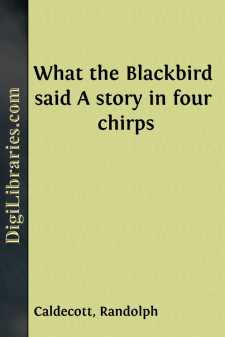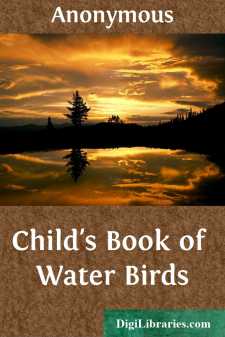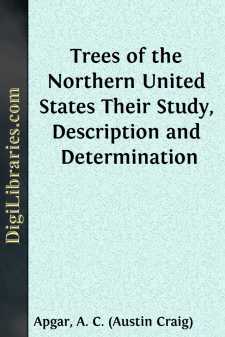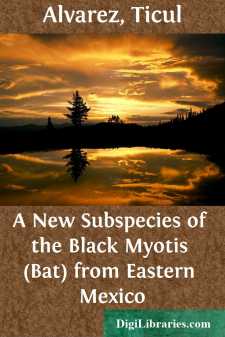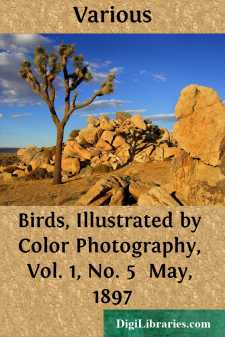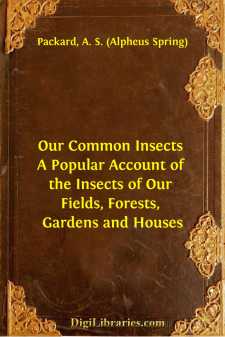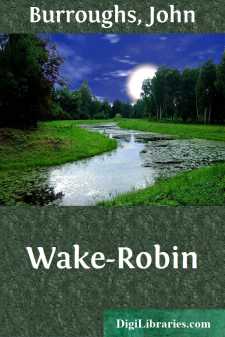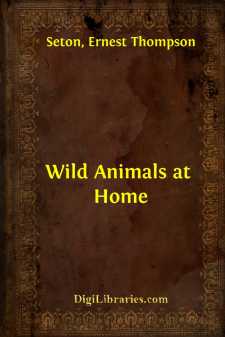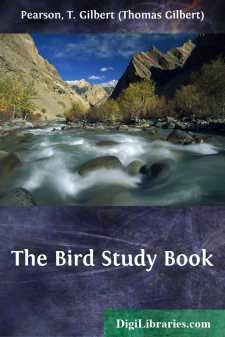Nature
Nature Books
Sort by:
CHIRP THE FIRST. The winter of 1878 was certainly an unusually dreary one, and so thought a remarkably fine young Blackbird, as he perched one morning on the bare bough of a spreading lime-tree, whose last brown leaf had fallen to the ground some weeks before. With the exception of the Scotch firs and other fortunate evergreens, there was nothing to be seen on all sides but leafless branches standing...
more...
by:
Anonymous
The Swan. The Swan is a very beautiful bird. It is generally white, though a black swan has been discovered in Australia. It is not very often seen in this country. It was brought from Asia and Eastern Europe into England—from whence, most probably, a few specimens have been introduced into this country. The Swan is very graceful in the water, but on land it is an awkward waddler. The Coot is...
more...
PREFACE. This book has been prepared with the idea that teachers generally would be glad to introduce into their classes work dealing with the real objects of nature, provided the work chosen were of a character that would admit of its being studied at all seasons and in all localities, and that the subject were one of general interest, and one that could be taught successfully by those who have had no...
more...
by:
Ticul Alvarez
In 1928 when Miller and Allen (Bull. U. S. Nat. Mus., 144) published their revisionary account of American bats of the genus Myotis, the black myotis, Myotis nigricans, was known no farther north than Chiapas and Campeche. Collections of mammals made in recent years for the Museum of Natural History of The University of Kansas include specimens of M. nigricans from eastern Mexico as far north as...
more...
by:
Various
NESTING TIME. “There swims no goose so gray, but soon or late,She takes some honest gander for a mate;”There live no birds, however bright or plain,But rear a brood to take their place again.—C. C. M.QUITE the jolliest season of the year, with the birds, is when they begin to require a home, either as a shelter from the weather, a defence against their enemies, or a place to rear and protect...
more...
PREFACE. This little volume mainly consists of a reprint of a series of essays which appeared in the "American Naturalist" (Vols. i-v, 1867-71). It is hoped that their perusal may lead to a better acquaintance with the habits and forms of our more common insects. The introduction was written expressly for this book, as well as Chapter XIII, "Hints on the Ancestry of Insects." The...
more...
by:
Arthur Phillip
ANECDOTES OF GOVERNOR PHILLIP. Arthur Phillip is one of those officers, who, like Drake, Dampier, and Cook, has raised himself by his merit and his services, to distinction and command. His father was Jacob Phillip, a native of Frankfort, in Germany, who having settled in England, maintained his family and educated his son by teaching the languages. His mother was Elizabeth Breach, who married for her...
more...
by:
John Burroughs
In coming before the public with a newly made edition of my writings, what can I say to my reader at this stage of our acquaintance that will lead to a better understanding between us? Probably nothing. We understand each other very well already. I have offered myself as his guide to certain matters out of doors, and to a few matters indoor, and he has accepted me upon my own terms, and has, on the...
more...
I The Cute Coyote AN EXEMPLARY LITTLE BEAST, MY FRIEND THE COYOTE If you draw a line around the region that is, or was, known as the Wild West, you will find that you have exactly outlined the kingdom of the Coyote. He is even yet found in every part of it, but, unlike his big brother the Wolf, he never frequented the region known as Eastern America. This is one of the few wild creatures that you can...
more...
CHAPTER I It is in spring that wild birds make their strongest appeal to the human mind; in fact, the words "birds" and "spring" seem almost synonymous, so accustomed are we to associate one with the other. All the wild riotous singing, all the brave flashing of wings and tail, all the mad dashing in and out among the thickets or soaring upward above the tree-tops, are impelled by the...
more...


